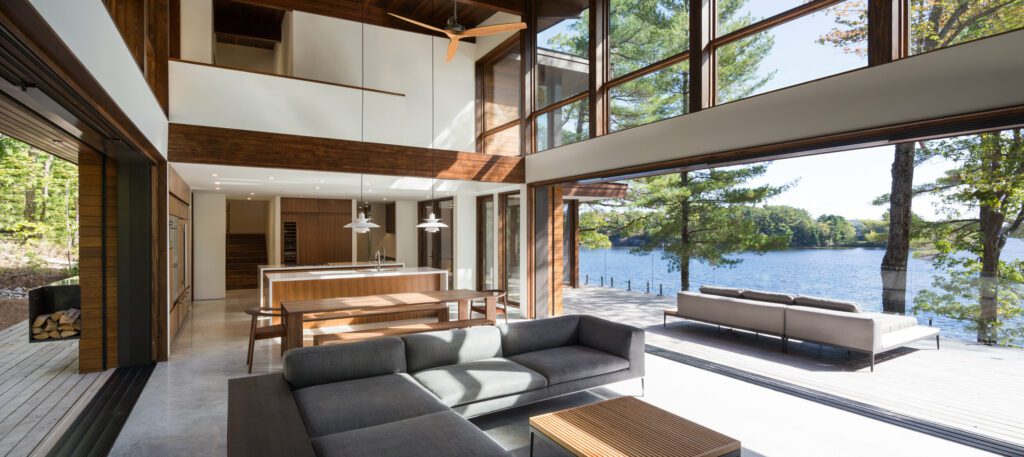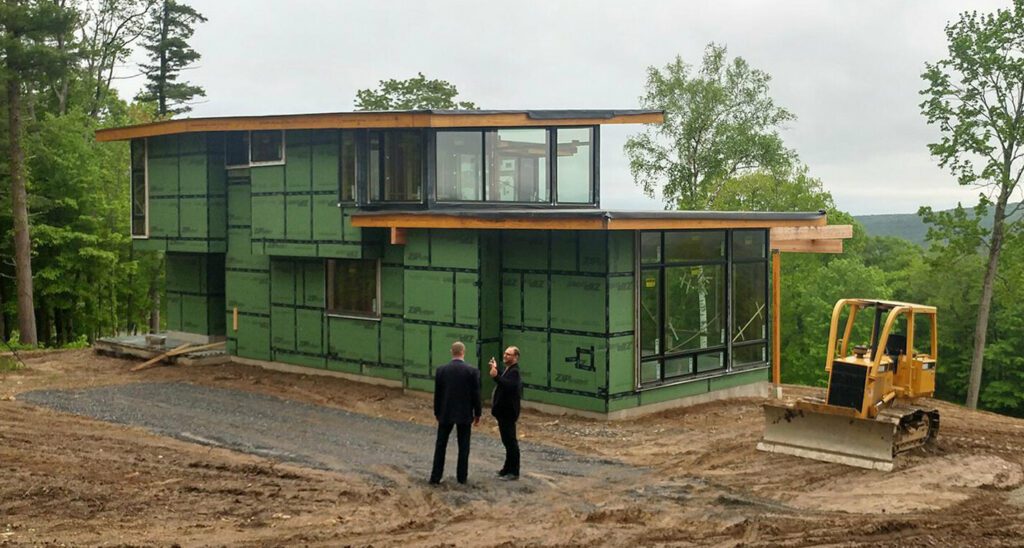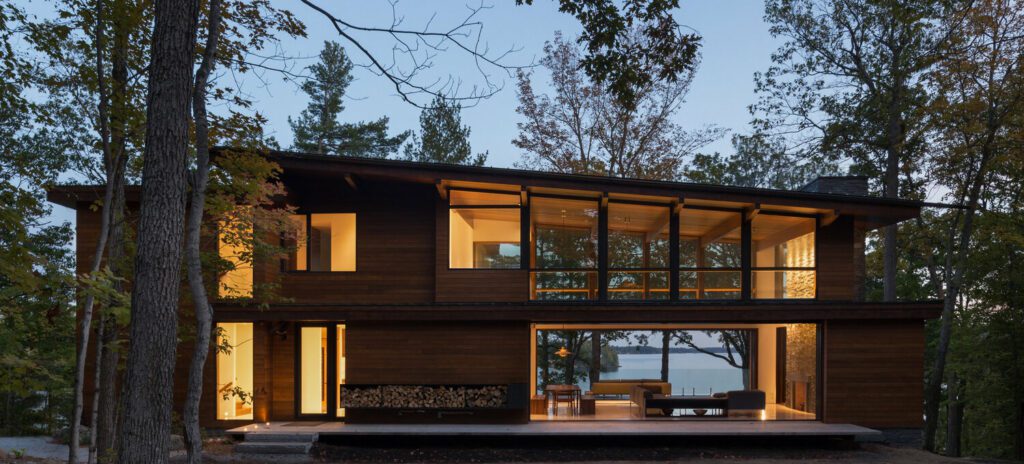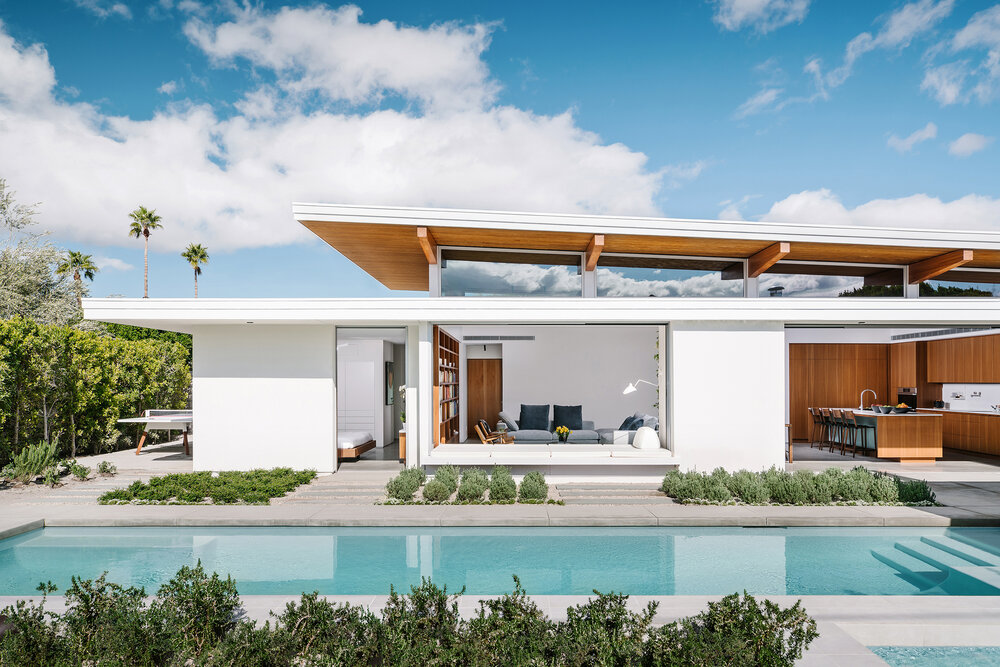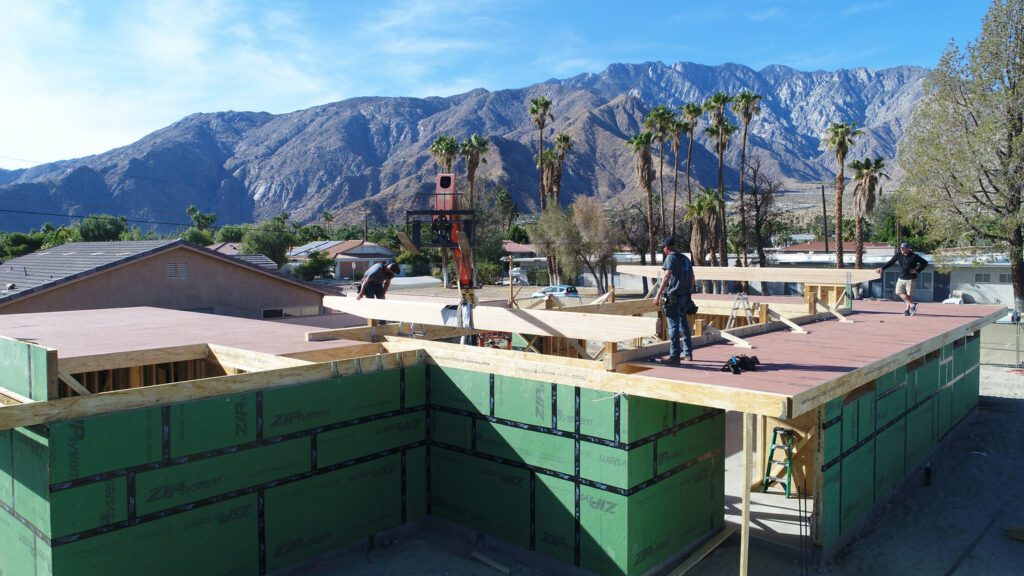
In last month’s post on Passive Solar Design, we discussed how the materials used to build your home can have a major effect on the amount of energy it uses. But the reality is that your home uses energy even before you move in. This is called “embodied carbon”—i.e., the total emissions associated with a building’s materials and construction.
Although we may think of chopping down trees to build homes as an inherently destructive act for the environment, building with wood can actually reduce a home’s embodied carbon. In comparison, steel and concrete require a tremendous amount of energy to manufacture and transport—their production accounts for 13% of global carbon emissions.
While wood is a better choice for the environment than concrete or steel, some types of wood are more sustainable than others. Many Turkel Design homes use engineered wood, which reduces waste by using byproducts of the lumber-manufacturing process, like the residual pieces left over when you saw square boards out of cylindrical tree trunks. Rather than being burned or sent to landfills, these leftovers are put to good use.
This video shows some engineered wooden studs. These are laminated strand lumber, made by milling leftover wood into strands, laying them into molds, and subjecting them to great pressure. You can see the results: studs that are not just uniform in their dimensions but also amazingly straight.
The popularity of engineered wood has grown rapidly in recent years. Not only does engineered wood benefit the environment by reducing waste, it’s more durable than regular lumber, neither shrinking nor warping over its lifetime. And it can be engineered to precise tolerances, making it a better choice for our prefab panels. They go together into a structure that’s straight and tight, thus more efficient to heat and cool.
When designing our homes, we carefully select the vendors that will supply the materials, fixtures, and finishes. Our experience means we know where to find the best engineered wood for your home. At Desert House in Palm Springs, California—the home of Turkel Design cofounders Joel and Meelena Turkel—the panels are made with laminated strand lumber, like you saw in the video.
When completed in 2019, Desert House was the first Turkel Design home to use entirely engineered wood. Several years later, this is common in our work.
“We love engineered wood,” says Meelena Turkel. “It comes from the factory straight and stays that way. When it comes to the construction site, its dimensions are as specified, which allows for the precise fit and finish we so prize in our houses. In our Desert House we used engineered lumber throughout, and the results exceeded our expectations.”
TimberStrand® laminated strand lumber is engineered from small-diameter trees that aren’t large or strong enough to produce conventional lumber. TimberStrand® is widely acclaimed for its consistency and versatility. We’re using it in this home on the coast of northern Florida, shown below. The finished product is sure to be as durable and well-constructed as it will be beautiful.
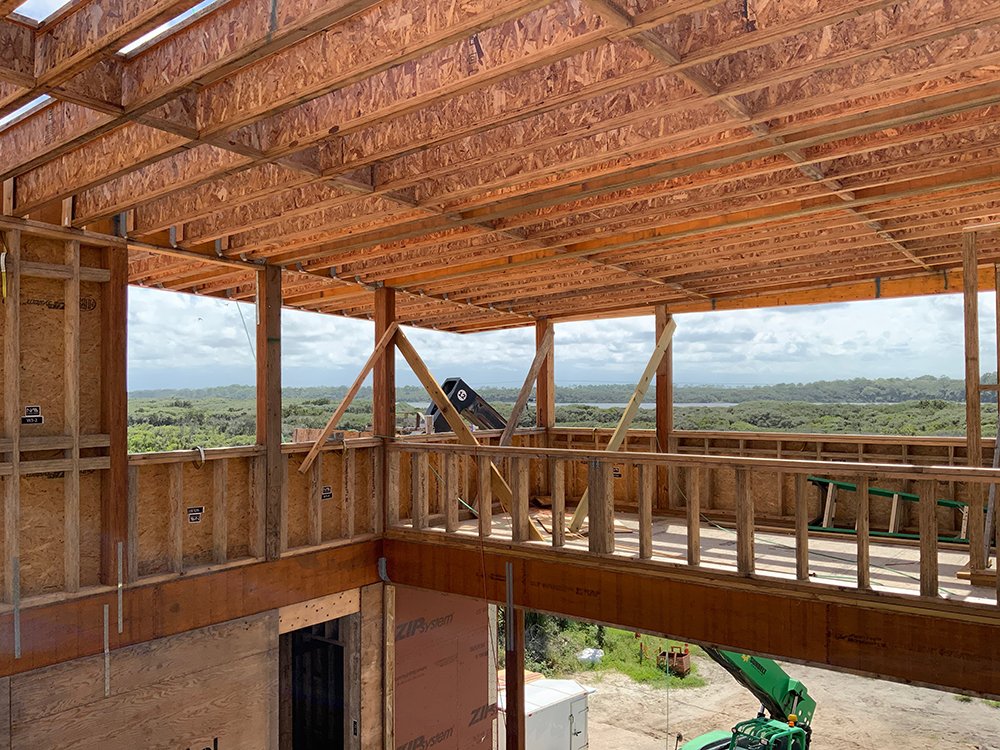
What do you want your home to be made of?
At Turkel Design, we guide our clients through a comprehensive process to select the materials and finishes that comprise each home. Our team loves to share their knowledge of the best beautiful, sustainable materials on the market.
Please contact us to discuss how you want to live.
